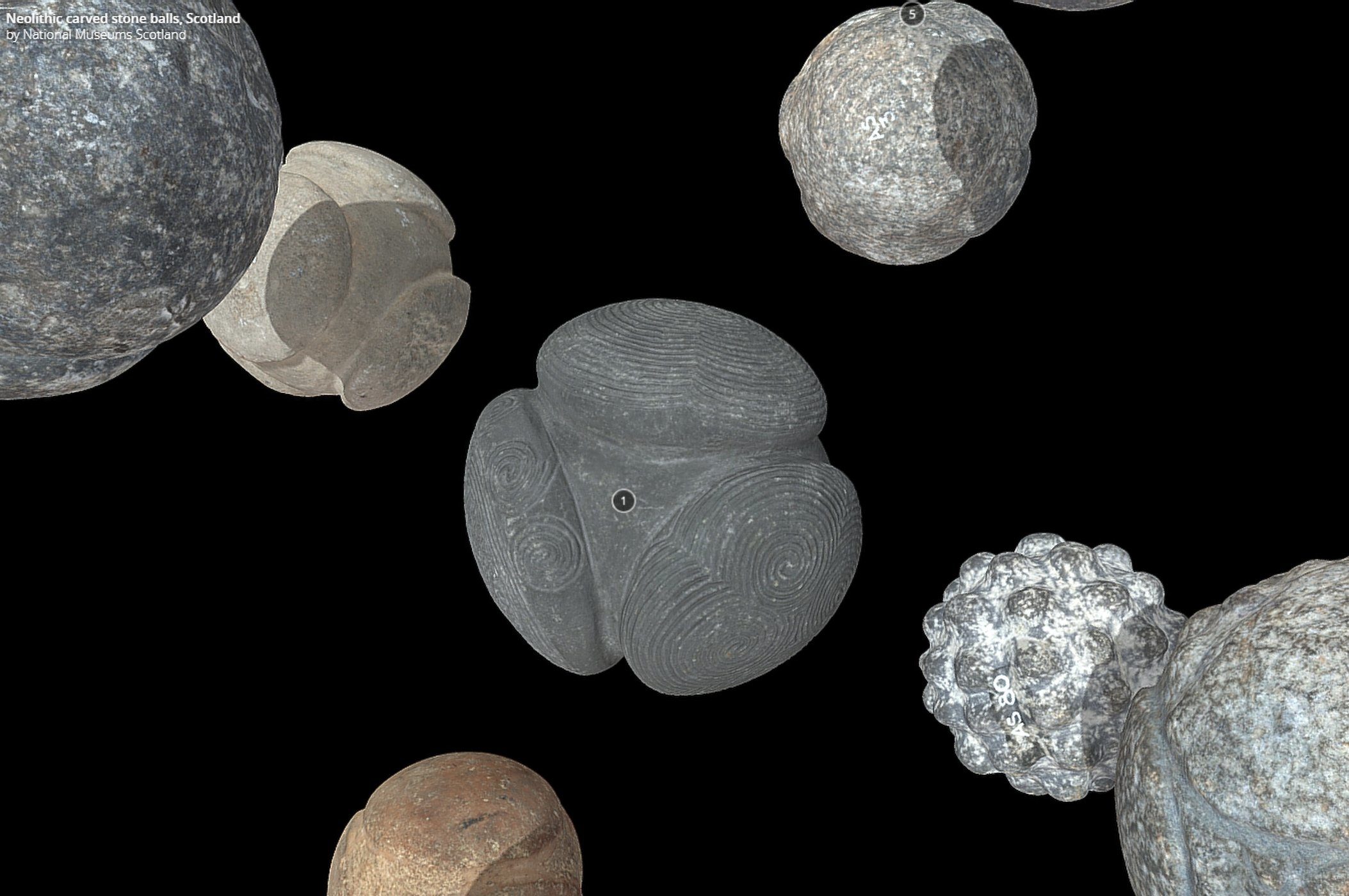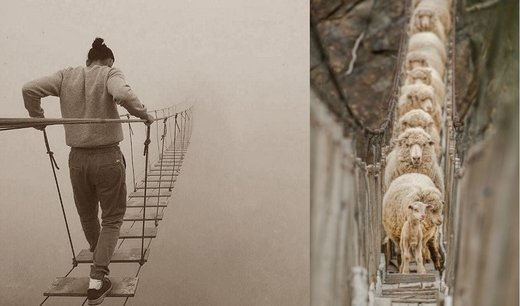
More than 500 of the enigmatic objects have now been found, most of them in northeast Scotland, but also in the Orkney Islands, England, Ireland and one in Norway.
Archaeologists still don't know the original purpose or meaning of the Neolithic stone balls, which are recognized as some of the finest examples of Neolithic art found anywhere in the world. But now, they've created virtual 3D models of the gorgeous balls, primarily to share with the public. In addition, the models have revealed some new details, including once-hidden patterns in the carvings on the balls. [See More Photos of the Intricately Carved Stone Balls]
Hugo Anderson-Whymark, a curator at National Museums Scotland who created the online models, explained that many functions have been proposed for the stone balls over the years.
Such proposals have included the possibility that they were made as the stone heads for crushing weapons, or standardized weights for Neolithic traders, or rollers for the transport of the giant stones used in megalithic monuments.
One theory is that the knobs on many of the carved stone balls were wound with twine or sinew, which allowed them to be thrown like slings or South American bolas. Other theories describe the balls as objects of religious devotion or symbols of social status.
"Many of the ideas you have to take with a pinch of salt, while there are others that may be plausible," Anderson-Whymark told Live Science. "What's interesting is that people really get their imaginations captured by them - they still hold a lot of secrets."
Neolithic mystery
The National Museum of Scotland in Edinburgh has the world's largest collection of carved stone balls, including around 140 originals from Neolithic (New Stone Age) sites in Scotland and the Orkney Islands, and 60 casts of similar objects from other places.
Although only a few are now on display in Edinburgh, a total of 60 3D models of Neolithic carved stone balls from the museum collection have now been posted online - so that anyone interested in ancient wonders, anywhere in the world, can examine them in detail and from any angle.
The online collection includes the most famous of these objects, the Towie ball, which was found near the village of Towie in northeast Scotland around 1860. The ball is carved with intertwined spiral patterns on three of its four lobes, and is recognized as one of the finest examples of Neolithic art ever found.

But later archaeologists were able to date the carved stone balls to the much earlier Neolithic period of prehistory, about 5,000 years ago, when only stone tools were used, he said.
Many of the ornamental motifs used on the carved stone balls, including the detailed circles and spirals carved into the Towie ball, were also found in carvings at Neolithic passage tombs, which feature underground burial chambers at the end of long stone-lined passageways, such as the Newgrange tomb in Ireland.
The similarity of the designs could show that people in different regions during the Neolithic period in Europe shared common ideas, which indicated some forms of interaction between their communities, Anderson-Whymark said.
Ancient objects in 3D
The online 3D models were created with photogrammetry, which involves uniting detailed photographs of the surface textures and colors of the objects with precise data about their size and shape.
The photogrammetry process has revealed new information about some of the balls, by revealing underlying patterns of carved and chipped markings on some of them that otherwise could not be clearly seen, he said.
He thinks that the key to understanding the carved stone balls lies in their "regular" size, which was perfect for being held in the hand while they were chipped or pecked by harder stone tools.
Creating one of the carved stone balls must have been a lengthy process - several of them show signs that their design evolved as they were worked on, perhaps over many years or even across generations, he said.
While discussion and speculation about their purpose and meaning to the Neolithic people will continue, the stone balls are likely to retain much of their enduring mystery, Anderson-Whymark said.
"We might be able to get a little bit more of that story out in the future by more detailed analysis of these things," he said, "but they're always going to be slightly enigmatic."



Reader Comments
What type of 'stone' was used. (Maybe the author didn't know there's more than one type of 'stone'; or he was a different type of stone(d) when the article was written, once again, omitting countless basic facts:
Do they all weigh the same?
Or perhaps are they all identical in size? (Density changes 'weight' depending if the stone' is granite or marble or sandstone, etc.)
What stone are they made from?
I.e., the basics? Who, what, where, when (acknowledge guesses when they're made) et al.
I get frustrated with such half ass 'articles' which lack the basics.
R.C.
In this wise primitive forbears copied, imitated and internalised the realm of the 'gods' - which was both awesome and terrifyingly destructive as human experience. Hence the sacrifice and appeals for appeasement that seek to ally the calamity or bring back the sense of protection. All of these patterns of interpreted conditioning are internalised as the structuring of our split 'consciousness' over a truly timeless awareness of being.
The other alt-history tends to use ET civilisations as a seeding/genetic manipulation of a 'slave race'. I said ET rather than alien because we do not remember where we came from and project our current consciousness - and physicality backwards - whereas I resonate with the devolution of fragmented and limited forms of consciousness from a lost sense of wholeness as a result of divisions, dissonances and controls that generate chaos that effectively runs a self perpetuating negative loop. I don't see these two approaches as mutually exclusive but our current sense of aliens or ET is more a projection upon our own Consciousness.
Until there is a Flip to the reintegrative movement in which all sorts of previously misinterpretd or discarded information becomes key to a unified appreciation.
Just do an image search for "pollen through a microscope"
...............
[Link]